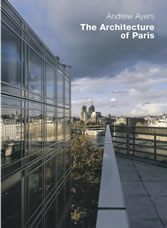Suchen und Finden
Service
The Architecture of Paris
Andrew Ayers
Verlag Edition Axel Menges, 2001
ISBN 9783930698967 , 416 Seiten
Format PDF, OL
Kopierschutz DRM
23 Ecouen (p. 296)
23.1 Château d’Ecouen
Various architects, c. 1538–55 (SNCF: Ecouen-Ezanville, then either a 2 km walk or bus 269, direction Garges-Sarcelles, to Mairie d’Ecouen)
Situated a mere 19 km outside central Paris, this splendid French-Renaissance château is surprisingly little known and little visited, all the more surprisingly given that it is also home to the fine collections of the Musée National de la Renaissance. This is no doubt largely due to its current isolation with regard to the Ile-de- France’s major population centres, but its situation did not always seem so parochial. The château occupies an elevated plateau dominating the Plaine de France around it, a strategic position that made it essential in the defence of the realm against invaders from the north and the east. Property of the Barons de Montmorency from at least 1000 AD, the promontory was the site of an older fortress that was demolished to make way for today’s château by the illustrious Anne de Montmorency, favourite of François I, who become Constable of France (head of the armies) in 1538. The coincidence of the dates of this change in Anne’s fortunes and his decision to reconstruct Ecouen is probably not accidental, and many historians agree that the new château was destined to reflect in built form the increased power and prestige of its seigneur.
Ecouen is a contemporary of the famous châteaux of the Loire valley – which at the time was where the court and aristocracy were mostly concentrated –, and it is thus to them that one should look to set Montmorency’s building in its historical context. Like its Tourangeaux confrères, Ecouen marks the beginning of the transition from the medieval fortress in which the aristocracy had hitherto lived to the stately home they would occupy in later centuries. In plan Ecouen is still like a castle: square, its four wings enclosing a central courtyard, and its outer corners marked by solid square pavilions that took the place of the bastions one would find in a castle. The use of pavilions was a move towards civil architecture that broke, for example, with François I’s slightly earlier Château de Chambord (c. 1518–37), but which would afterwards become standard for French châteaux. Surrounding Ecouen are elaborate medieval-style moats comprising grazing-fire emplacements, but it is clear that their function was purely symbolic since not only are the moats dry but they disappear off the side of the promontory to the north. Ecouen again breaks with the Loire-Valley châteaux in that it does not descend directly into its moats as they do but is set back on a sort of platform, another innovation that would become standard in French châteaux thereafter. On Ecouen’s north front the platform extends into a sizeable terrace overlooking the village, below which originally stood a real-tennis court (since destroyed).
The built mass of Ecouen is organized as a Ushaped ensemble of three equal-height wings containing the principal accommodation, the fourth, east-facing, entrance side having originally been closed by a wall. This massing was modern and followed a vogue introduced in French chateau design at the beginning of the 16C (and still current over a century later, for example at the Palais du Luxembourg, 6.8).



